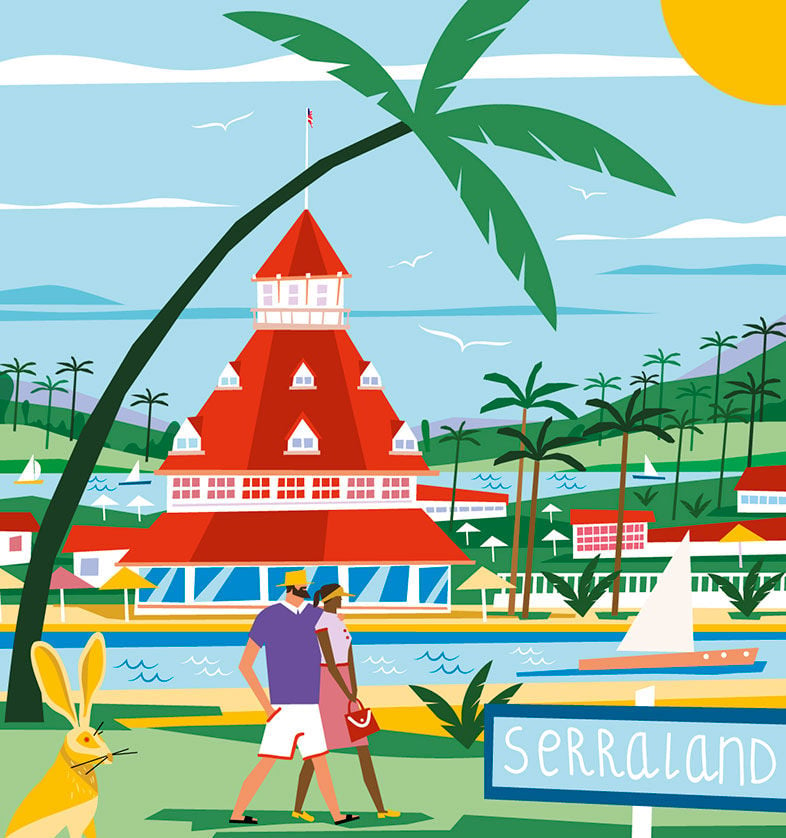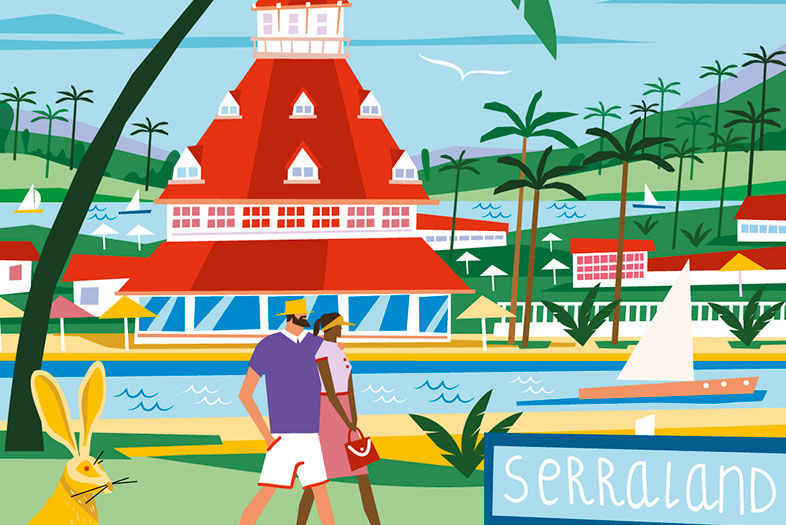
Why Do People Call It Coronado Island When It’s a Peninsula?
Illustration by Verónica Grech
Question from Colton L., North Park
The map of San Diego Bay is full of lies. North Island, Shelter Island, Harbor Island, Coronado Island—none of them qualify. So how do they get away with it? The short answer is, you don’t get tourists with a name like “Coronado Peninsula.” (Just think of the sign vandalism.) The longer answer takes us back to Rome and the last ice age. Shelter Island was just a muddy sandbar until Port Authority projects connected it to the shore by 1950. Harbor Island is 100 percent landfill, so it has no excuse for its misnomer. But a couple dozen thousand years ago, Coronado, North Island, and even Point Loma really were islands. Sediment from the San Diego and Tijuana rivers gradually built up and connected them to the mainland. A shallow channel called the Spanish Bight separated North Island from Coronado at high tide until World War II, when the Navy filled it in.
That answers the “Island” part. But while we’re at it, why “Coronado”?
On November 5, 1602, somebody on Sebastian Vizcaíno’s ship, San Diego, spotted four islands off Baja that didn’t have a Spanish name yet. Since it was the feast day of “the four crowned martyrs” (sculptors who’d refused to make pagan statues in third century Rome), the ship’s priest suggested the name “Las Islas de Los Coronados.”
But our future resort town was still called “the San Diego Peninsula” for the next 284 years. Its first Mexican owner sold it for $1,000; developers Elisha S. Babcock and H. L. Story bought everything south of North Island in 1886 for $110,000.
Babcock and Story had some big peninsula plans. They envisioned a grand hotel that would help balance the area’s rabbit-to-human ratio, which stood at 10,000 to 1. (Orange Avenue was originally lined with orange trees, but the rabbits kept eating them.) They formed the Coronado Beach Company, named after the Baja islands, and held a contest to come up with the best new name for the place.
Among the uninspiring contenders were Brooklyn, Ultima Thule, and Cork. A January 27, 1886, letter to the San Diego Union complained that none of the contest entries were satisfactory: “The owners of the Peninsula have been cudgelling their brains for the past two months trying to select a suitable name therefor. […] The name ‘Miramar’ was at last determined upon as a compromise. It was not the first choice.” Ultimately, they disregarded the contest and went with their own name, Coronado, writing, “It certainly has a vigorous and euphonious ring.”
It could’ve been worse. An anonymous letter in that same day’s paper suggested that because “Father Junipero Serra and his labors in California are well known to all reading people […] the Peninsula can render evergreen and imperishable a page of history, and reward the grand old missionary of this south land by naming the Peninsula Serraland.”
Modern ears, be glad our gateway to the Pacific doesn’t sound like the world’s most somber theme park.
Thank you to Central Library staff Rick Crawford, Matthew Nye, and Dustin Vogel for their research assistance.



















